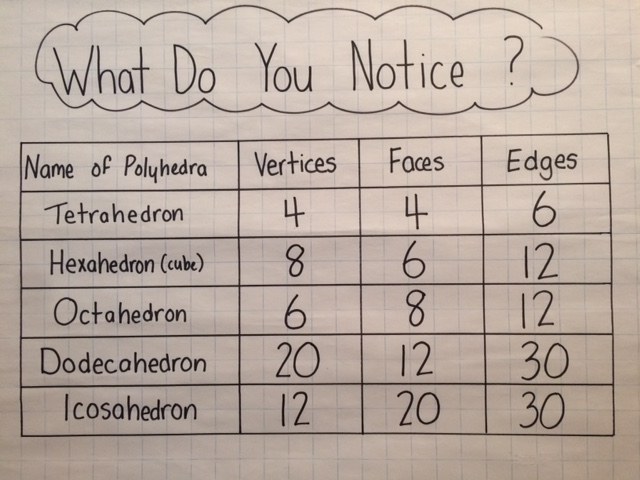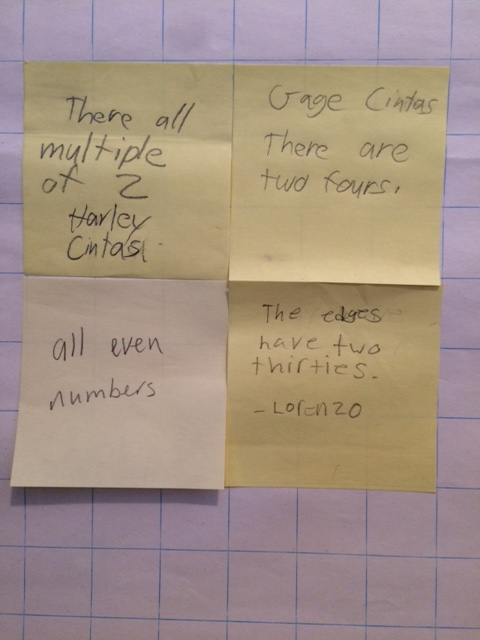
Primary students (K-2): number recognition, number matching
Intermediate students (3-5): looking for patterns
There's a relationship between the number of vertices, faces, and edges on a polyhedron* that will always result in the number '2'. Knowing the relationship results in a formula. We call this formula Euler's Polyhedron Formula because it was discovered in the eighteenth century by a mathematician named Leonhard Euler (pronounced oiler). Through his study of Platonic solids, he found that the number of edges (E), vertices (V), and faces (F) followed a simple rule. This chart lists these polyhedra and the corresponding vertices, faces, and edges so that students can look for patterns in the numbers and possibly figure out the formula. Admittedly, it's not an easy relationship to see, but, with perseverance...
There are several ways to write the formulas:
● F + V - E = 2
● V - E + F = 2
● V + F = E + 2
● F + V - 2 = E
*A polyhedron is a 3-dimensional solid made up of polygons. Polygons are 2-dimensional shapes made up of three or more line segments.

"They are all multiples of 2."
"There are two 'fours'."
"All even numbers."
"The edges have two 'thirties'."